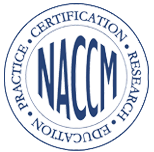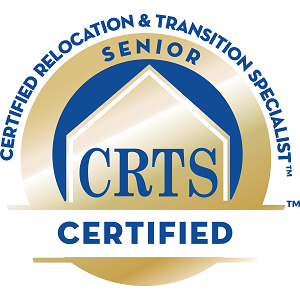Spinal Muscular Atrophy Awareness Month: Effects on Seniors
August is Spinal Muscular Atrophy Awareness Month, which aims to help people learn more about this progressive disease. Living with Spinal Muscular Atrophy (SMA) affects every aspect of a person’s life. By learning more about SMA, you can help educate, inform, fund, and support measures to care for seniors suffering from this condition.
What Is Spinal Muscular Atrophy?
Spinal muscular atrophy is a class of hereditary neurological disorders. It affects the nerves in the spinal cord and brain stem, which alters essential musculoskeletal activities, like speaking, moving, swallowing, and even breathing.
The most common cause of SMA is a chromosomal defect in copies of the survivor motor neuron 1 (SMN1) and chromosome 5q. People with SMA symptoms have two mutated genes, while those with only one can pass on the disease but exhibit no symptoms.
There are four identified types of spinal muscular atrophy:
SMA 1 – Also known as infantile-onset SMA or Werdnig-Hoffmann disease, this type of SMA presents in infants before they are six months old. In severe cases, even babies in utero will exhibit reduced movements, and they are often born with breathing difficulties and contractures (permanently tightened muscles, tendons, and skin).
Without treatment, infants with SMA 1 do not survive their first year. People born with SMA 1 develop scoliosis (curved spines) and other issues with their skeletal structure.
Unfortunately, the life expectancy for children born with SMA 1 is only two years.
SMA 2 – The intermediate form of SMA affects a person’s ability to walk. While children with this condition can learn to sit up without support, most never walk alone. Generally, symptoms of SMA 2 appear between the ages of 6 to 18 months.
The good news is that children with SMA 2 have an average life expectancy, and they can go on to live full lives.
SMA 3 – The milder form of spinal muscular atrophy known as Kugelberg-Welander disease causes issues with mobility. On average, children with SMA 3 have a normal life expectancy, but they usually have degenerative muscles and require mobility assistance. As they age, most will need a wheelchair.
SMA 4 – SMA 4 is a rare type of spinal muscular atrophy that begins to present in early adulthood. It causes mild to moderate muscle weakness, leg weakness, and tremors. Some people with this condition may need a wheelchair and daily assistance.
Why Spreading Spinal Muscular Atrophy Awareness Matters
Founded by CureSMA, Spinal Muscular Atrophy Awareness Month promotes education and funding for treatments of SMA. It supports programs that make life easier and more enjoyable for people living with SMA.
Sharing experiences with SMA helps foster connection and inspire hope and strength. It also helps people learn about the risks and may even encourage some to seek genetic testing to see if they could pass SMA onto their children.
Many people don’t know that 1 in 50 Americans are carriers of the SMA chromosomal mutation. Most carriers don’t have any known family history of the disease.
Recently, researchers found a connection between spinal muscular atrophy and ALS (Lou Gehrig’s disease). Spreading awareness could help inspire more research that leads to better treatment options and longer life expectancies for people with the condition.
How Spinal Muscular Atrophy Affects Seniors
Seniors with SMA have difficulty with coordination, mobility, and muscle control. We know that muscle degeneration is a natural part of aging, and this can accelerate and worsen the symptoms of SMA in older adults.
In severe cases, they may lose control over their necks and the ability to swallow and breathe independently.
For most seniors with SMA, however, the most significant impact on their life is their reduced mobility and muscle strength.
Having SMA as a senior can confine them to a wheelchair, or it may restrict their ability to care for themselves. This can induce a wide range of psychological effects, most notably depression.
Understanding how SMA affects seniors can help caregivers provide higher-quality assistance to their loved ones. Although they will always face limitations with their disability, seniors can still lead happy lives with the right interventions.
How to Help Seniors Living with Spinal Muscular Atrophy
Seniors with SMA will likely need some mobility assistance. Finding ways to make daily life easier and more accessible can make a tremendous difference in their lives.
For instance, if your elderly relative with SMA uses a walker or wheelchair, try to keep things they use within their reach. This may mean modifying the layout of your home so surfaces are lower and easier to access.
At meal times, keep an eye on your loved ones to ensure they’re not having any issues swallowing. Seniors with SMA and muscular dystrophy are at a higher risk of choking because of their weakened muscles.
Preparing meals that are cut small and easier to swallow can reduce the risk and the strain your loved one has to exert when enjoying their meals.
Mobility within their means is also important. While they have limitations, strengthening exercises can help improve functionality in people with SMA. Weakened respiratory muscles also increase the risk of fluid in the lungs, so routine movement and exercise make all the difference.
You might also consider home health care assistance for your loved one with SMA. As this disorder progresses, your relative’s needs will change, so you might need assistance in giving them the best quality of life.
At Reflections Management and Care, we provide various expert senior care services to families in New York. Click here to learn more about what we can do for your loved one.














